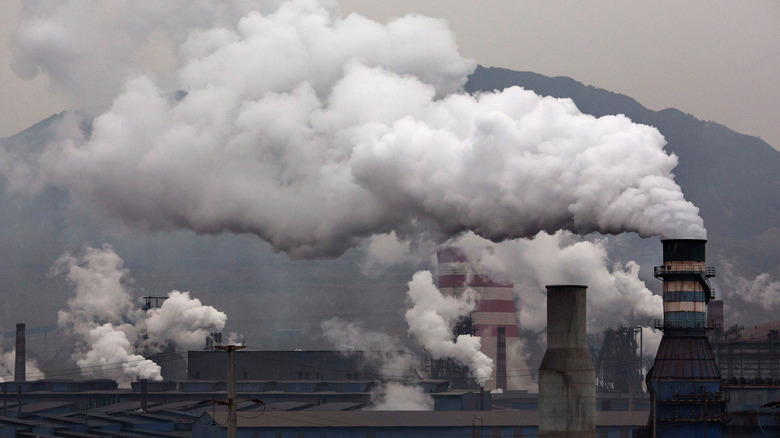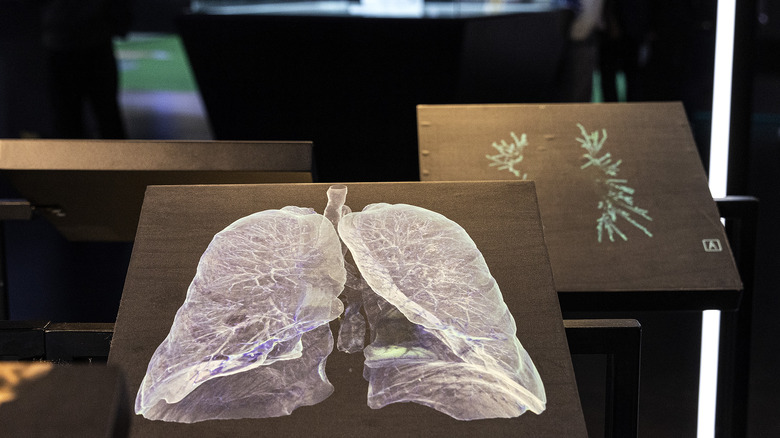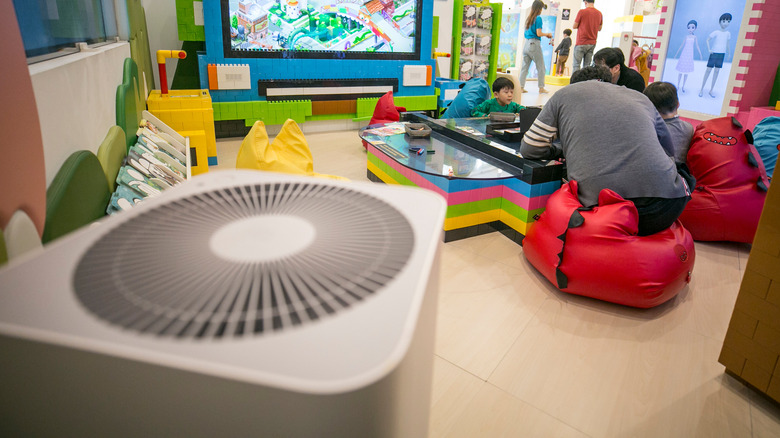How Air Pollution Can Lead To Certain Cancers
It might seem like the plot of a horror film or a true crime podcast, but in everyday air there is a mix of microscopic acids, metals, chemicals, and other eerie ingredients that sound like the ingredients of a deadly cocktail (via American Lung Association). Made up of tiny bits of liquid and solid matter, particle pollution is a massive environmental problem that poses a threat to health and has been linked to certain types of cancers. From dirt and soil to emissions from motor vehicles, power plants, and forest fires, the air we breathe is filled with dangerous micro-particles that can't be seen with the naked eye, but can be extremely toxic to our health.
Particle pollution is pollution created by particle pollutants, which are also called particulate matter or PM for short, according to the California Air Resources Board. These particle pollutants cause particle pollution — try saying that three times fast! Unfortunately, this tongue twister comes with a necessity to become informed about the particles in the air we breathe that can lead to life-threatening health conditions. Particulate matter is defined as particles 10 micrometers (a marker known as PM10) or smaller in diameter. Even smaller than particle pollutants are fine particles, which measure 2.5 micrometers (PM2.5) or smaller in diameter. While PM10 particles can enter the average human nose and throat and travel to the lungs, PM2.5 particles can dig themselves even deeper into lungs. This is important to know for both lung and overall health.
Particle pollution and lung cancer
Of all forms of cancer, lung cancer is the top killer in the United States according to the American Lung Association, and it's not just due to cigarettes — air pollution is also a culprit. Our bodies have natural defense systems to sneeze or cough out particles and foreign bodies that are dangerous to our health, but the smaller the particles, the less likely it is that our bodies can get rid of them. Instead, they become lodged in our lungs and may even enter our bloodstreams. In particular, exposure to and inhalation of fine particles has been linked to higher rates of mortality in lung cancer (via United States Environmental Protection Agency). The effects of fine particles on lung cancer and mortality have been linked to many types of particle pollutants, but especially those from coal combustion, wood smoke, and other known carcinogens.
The Centers for Disease Control and Prevention (CDC) reports that up to 20% of lung cancers present in people who don't smoke cigarettes or use tobacco products. When it comes to identifying lung cancer, symptoms can vary from person to person. Some people generally feel unwell or fatigued without symptoms indicating an issue in the lungs, while others may experience chest pain, wheezing, or a persistent cough that becomes worse or includes blood. Since lung cancer can metastasize to other parts of the body, it's critical that you see your doctor if you experience any symptoms.
Protect against particle pollution
Since particle matter can't be seen by the naked eye but can be so harmful to our health, it's important to know how you can protect yourself. For particle pollutants from wildfires, dust, fumes, and other air pollution, wearing a respirator mask can protect you from dangerous particulate matter, including PM from home renovation projects (via The New York Times). Effective respirator masks to protect against particle pollutants include disposable N95 masks labeled 3M-8210 and 3M-8511. Investing in an air purifier can help you protect the air quality in your home to filter particle pollutants from indoor air. A 2021 study published in Heliyon determined that air purifiers with High-Efficiency Particulate Air (HEPA) filters are effective in removing approximately 99.97% of particulate matter larger than 0.3 micrometers.
To reduce the particulate matter that you create, there are several steps you can take to make the environment and air quality better for everyone around you. The South Carolina Department of Health and Environmental Control recommends avoiding open burning of debris and household trash by instead utilizing compost and recycling options available in your local area. The average person's biggest contribution to particle pollution is usually through driving, which creates air pollution and particulate matter from vehicular emissions. Don't idle your car, keep your tires properly inflated so your car runs efficiently, and use cruise control on the highway. When possible, carpool with friends or colleagues, and take advantage of alternative transportation methods like biking or walking.



